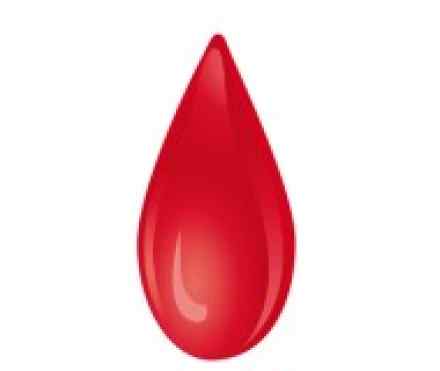
What is it?
- Hemophilia is a disorder of your blood-clotting system. Clotting is the process by which your blood changes from a liquid to a solid state in order to stop bleeding.
- There are several types of hemophilia. All types can cause prolonged bleeding. If you have hemophilia and you have a cut, you'll bleed for a longer time than you would if your blood clotted normally. Small cuts usually aren't much of a problem. The greater health concern is deep internal bleeding and bleeding into joints.
- Hemophilia is a lifelong disease. But with proper treatment and self-care, most people with hemophilia can maintain an active, productive lifestyle.
Symptoms
Signs and symptoms of hemophilia vary depending on how deficient you are in clot-forming proteins called clotting factors. If levels of your deficient clotting factor are very low, you may experience spontaneous bleeding.
Symptoms of spontaneous bleeding may include:
- Many large or deep bruises
- Joint pain and swelling caused by internal bleeding
- Unexplained bleeding or bruising
- Blood in your urine or stool
- Prolonged bleeding from cuts or injuries, or after surgery or tooth extraction
- Nosebleeds with no obvious cause
Tightness in your jointsEmergency signs and symptoms of hemophilia may include:
- Sudden pain, swelling, and warmth of large joints, such as knees, elbows, hips and shoulders, and of the muscles of your arms and legs
- Bleeding from an injury, especially if you have a severe form of hemophilia
- Painful, lasting headache
- Repeated vomiting
- Extreme fatigue
- Neck pain
- Double vision
Babies with hemophilia
At first, because of limited mobility, a baby with hemophilia usually won't have many problems related to hemophilia. But as your baby begins to move around, falling and bumping into things, superficial bruises may occur. This bleeding into soft tissue may become more frequent the more active your child becomes.
Causes
Coagulation involves blood particles called platelets and procoagulant plasma proteins called clotting factors. The cause of hemophilia is a deficiency of one of these clotting factors. Which type of hemophilia you have depends on which clotting factor is deficient:
- Hemophilia A. The most common type, hemophilia A is caused by lack of enough clotting factor VIII.
- Hemophilia B. This second most common type is caused by lack of enough clotting factor IX.
- Hemophilia C. Its cause is a lack of clotting factor XI, and symptoms are generally mild with this type of hemophilia.
The coagulation process
Coagulation begins when platelets stick to a blood vessel at the site of an injury. A cascade of enzyme reactions occurs to produce a web-like protein network that encircles the platelets and holds them in place (platelet phase) to form a clot (coagulation phase). In this cascade, each clotting factor is transformed, in turn, from an inactive to an active form.
Three categories of blood proteins play a role in this process:
- Procoagulant proteins. These proteins help form clots.
- Anticoagulant proteins. These proteins prevent formation of clots.
- Fibrinolytic proteins. These proteins help dissolve clots that have formed.
Hemophilia inheritance
Everyone has two sex chromosomes, one from each parent. Females inherit an X chromosome from their mother and an X chromosome from their father. Males inherit an X chromosome from their mother and a Y chromosome from their father.
- The gene that causes hemophilia A or B is located on the X chromosome, so it can't be passed from father to son. Hemophilia A or B almost always occurs in boys, and is passed from mother to son through one of the mother's genes. Most women who have the defective gene are simply carriers and exhibit no signs or symptoms of hemophilia. It's also possible for hemophilia A or B to occur through spontaneous gene mutation.
- The gene that causes hemophilia C can be passed on to children by either parent. Hemophilia C can occur in both boys and girls.
Complications
Complications may occur from the disease or from the treatment for the disease:
- Deep internal bleeding. Hemophilia may cause deep-muscle bleeding that leads to swelling of a limb. The swelling may press on nerves and lead to numbness or pain. This may result in a reluctance to use the limb.
- Damage to joints. Internal bleeding may also put pressure on and damage joints. Pain sometimes may be severe, and you may be reluctant to use a limb or move a joint. If bleeding occurs frequently and you don't receive adequate treatment, the irritation may lead to destruction of the joint or to the development of arthritis.
- Infection. People with hemophilia are more likely to receive blood transfusions and are at greater risk of receiving contaminated blood products. Until the mid-1980s, it was more common for people with hemophilia to become infected with the human immunodeficiency virus (HIV) or with hepatitis through contaminated blood products. Since then, blood products are much safer because of steps taken to screen the supply of donated blood. The risk of infection through blood products also has decreased substantially since the introduction of genetically engineered clotting products called recombinant factors, which are free of infection. However, it's still possible for people who rely on blood products to contract other diseases. If you have hemophilia, consider receiving immunization against hepatitis A and B.
- Adverse reaction to clotting-factor treatment. Some people with hemophilia develop proteins in their blood that inactivate clotting factors used to treat bleeding.
Diagnosis
For people with a family history of hemophilia, it's possible to test the fetus during pregnancy to determine if it is affected by the disease.
Analysis of a blood sample from either a child or an adult can show a deficiency of a clotting factor. Sometimes, mild hemophilia isn't diagnosed until after a person has undergone surgery and excessive bleeding results.
References:
http://www.medicinenet.com/hemophilia/article.htm
https://en.wikipedia.org/wiki/Haemophilia
http://www.nhlbi.nih.gov/health/health-topics/topics/hemophilia
https://www.hemophilia.org/Bleeding-Disorders/Types-of-Bleeding-Disorders/Hemophilia-A
https://www.hemophilia.org/Bleeding-Disorders/Types-of-Bleeding-Disorders

